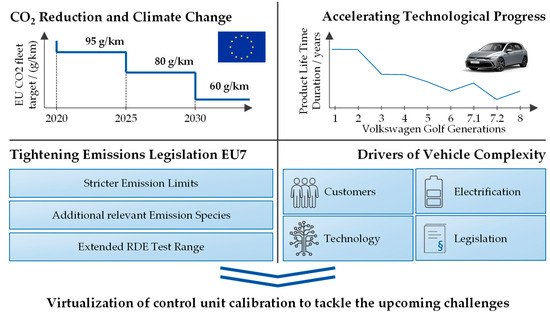Transportation Electrification: Challenges and Opportunities
A topical collection in Vehicles (ISSN 2624-8921).
Viewed by 5397Editors
Interests: smart grid; metaheuristics applications in power systems; computational intelligence; cyberphysical systems; transportation electrification
Special Issues, Collections and Topics in MDPI journals
Interests: smart grids; critical infrastructure interdependency; transportation electrification
Special Issues, Collections and Topics in MDPI journals
Topical Collection Information
Dear Colleagues,
Transportation electrification, including zero-emission transportation systems, has economic, environmental, and equity benefits over conventional fossil-fuel-based transportation systems. In the US alone, 27% of total greenhouse gas emissions are caused by gasoline-powered internal combustion engine automobiles. Electric transportation, however, decreases greenhouse gas emissions; increases efficiency, acceleration, and overall performance; and reduces maintenance costs. Although this ever-emerging field has exhibited immense potential and exponential growth in academic research and industrial manufacturing, adopting mass electrification in transportation remains challenging, with inadequate vehicle count and charging infrastructure, as well as supply chain constraints. Nevertheless, advent but consistent support from state, federal, and international entities has started to clear constrictions in terms of policy and technological development, for example, local and global policies, investments, electric rate design, electric system infrastructure, grid management, distribution infrastructure, vehicle–grid integration policy, pilots, safety, etc.
Furthermore, researchers and engineering manufacturers are pushing boundaries in technological advancements. These advances include device-, circuit-, and system-level developments. Their efforts also consider industry codes, standards amendments, and grid integration. Furthermore, interface technologies related to power and energy conversion, traction, propulsion, and actuation are necessary for all electrified vehicles, including passenger vehicles and trucks, trains, aircraft, ships, and other movable vessels.
Prof. Dr. Osama A. Mohammed
Prof. Dr. Ahmed Mohamed
Collection Editors
Manuscript Submission Information
Manuscripts should be submitted online at www.mdpi.com by registering and logging in to this website. Once you are registered, click here to go to the submission form. Manuscripts can be submitted until the deadline. All submissions that pass pre-check are peer-reviewed. Accepted papers will be published continuously in the journal (as soon as accepted) and will be listed together on the collection website. Research articles, review articles as well as short communications are invited. For planned papers, a title and short abstract (about 100 words) can be sent to the Editorial Office for announcement on this website.
Submitted manuscripts should not have been published previously, nor be under consideration for publication elsewhere (except conference proceedings papers). All manuscripts are thoroughly refereed through a single-blind peer-review process. A guide for authors and other relevant information for submission of manuscripts is available on the Instructions for Authors page. Vehicles is an international peer-reviewed open access quarterly journal published by MDPI.
Please visit the Instructions for Authors page before submitting a manuscript. The Article Processing Charge (APC) for publication in this open access journal is 1600 CHF (Swiss Francs). Submitted papers should be well formatted and use good English. Authors may use MDPI's English editing service prior to publication or during author revisions.
Keywords
- transportation electrification
- zero-emission transportation
- vehicle–grid integration
- power and energy conversion
- electrified vehicles
- EV codes and standards









